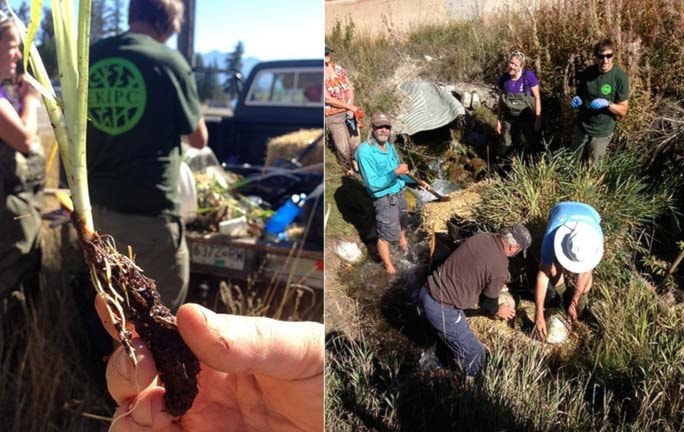While the yellow flag iris may be a beautiful flower while in bloom, it is also a threat to aquatic ecosystems and wetlands across the continent, including those in our backyard here in the Kootenays.
That's why last weekend, the East Kootenay Invasive Plant Council (EKIPC) hosted an event in Skookumchuck to remove the aquatic invasive plant.
Here in the East Kootenay, the small infestation at Skookumchuck is the only known location of yellow flag iris in the region.
Todd Larsen, EKIPC program manager noted it was important to work to eradicate this plant immediately to prevent it from spreading further.
"Left unmanaged, this solitary site could become an even larger problem downstream if it were to disperse and establish itself further down the Kootenay River," Larson said.
Volunteer help from the Jimsmith Lake Community Association, the Rocky Mountain Naturalists, and Springbrook Resort, EKIPC staff were able to remove existing patches of yellow flag iris which had spread down a small tributary of the Kootenay River.
Larson said they were fortunate to catch the infestation early on and prevent it from spreading, but added there is still the threat of plant fragments and seeds which could repopulate the waterway.
The site will need monitoring in future years to ensure the plant does not re-establish itself.
Once it establishes itself, outcompetes native vegetation and creates dense stands of iris-dominant vegetation.
In the Creston Valley wetlands along the Kootenay River it takes hours of volunteer work to control the infestation, as removal of the plant is done mostly by hand digging. That work is made arduous by the huge root systems the plant develops. It also prefers to grow in water, making removal more of a challenge.
The Invasive Species Council of BC noted that the plant has quickly spread throughout the Okanagan valley, lower Similkameen Valley, Shuswap Lake, Christina Lake and other isolated sites in the West Kootenay.
The volunteer work depends on the financial support from the Columbia Basin Trust, without which Larson said the work would not be possible. Larson said EKIPC gratefully acknowledges Columbia Basin Trust's support to deliver social, economic, and environmental benefits to the residents of the Columbia Basin. For more information on the invasive species, contact Larsen at coordinator@ekipc.com.
